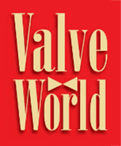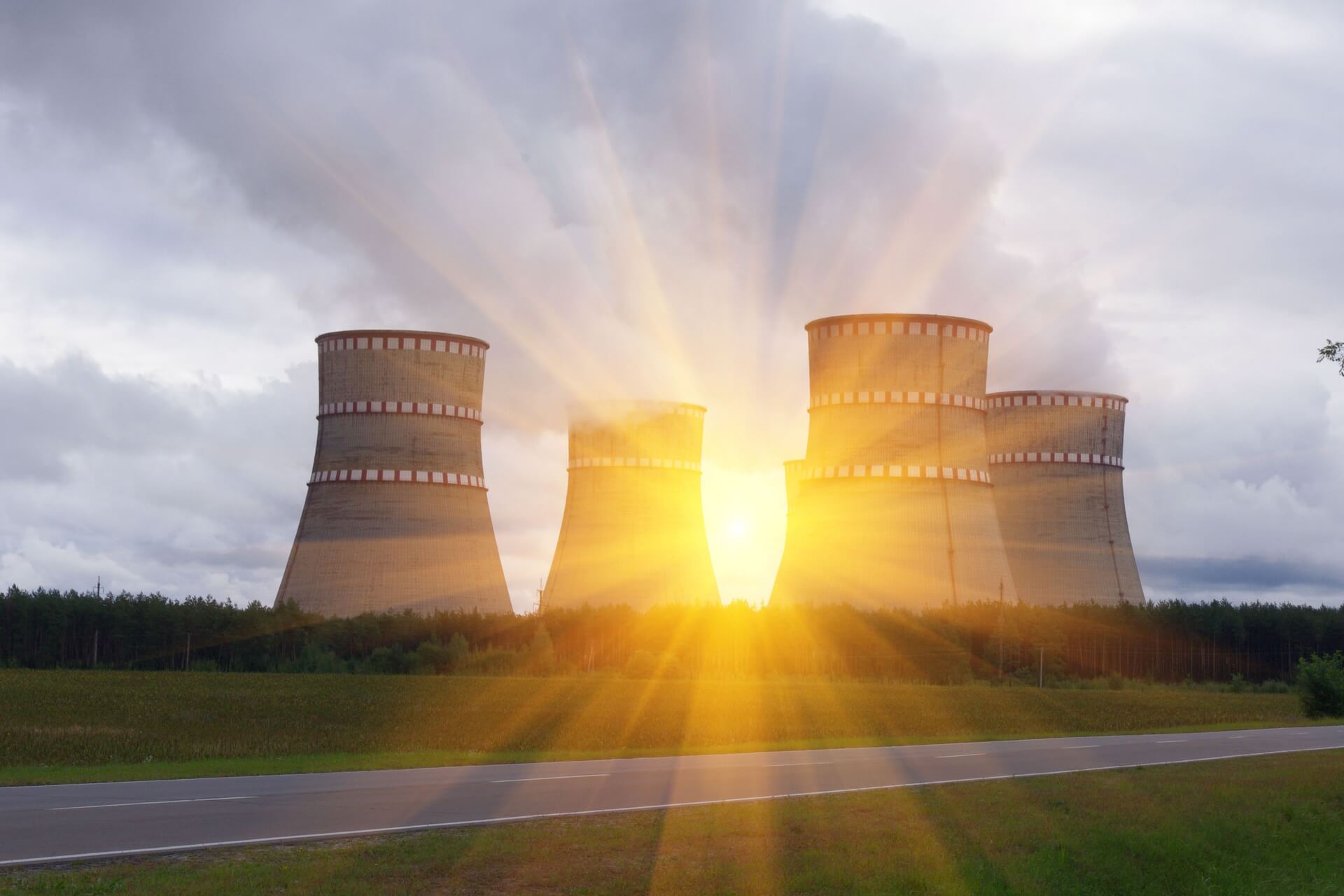Vistemboirs, or kinetic energy degraders, eliminate many valve vibrations in industrial and nuclear power plants, improving operational safety.
By Dr Michel Pluviose, Honorary Professor, Conservatoire National des Arts et Métiers
In 2020 the media reported serious valve design problems in third-generation EPR nuclear reactors. For example, during the commissioning of the Olkiluoto reactor in Finland, a safety valve was found to be cracked and leaking. Such failures are reminiscent of the Three Mile Island (TMI) accident, which was the subject of an open letter to President Jimmy Carter published by the Valve World team in its sister magazine Nuclear Exchange in 2013. The causes of these malfunctions and the solutions are deeply hidden in the physics of valves.
Causes of flow instabilities

Order and disorder play an important role in physics. Valves must degrade a certain amount of energy, thus creating a lot of disorder. Since Galileo and Newton, physics has established its laws based on order. The principle of least action summarises the situation in classical mechanics. The introduction of irreversibilities in the equations of mechanics has complicated their resolution. We have therefore simplified, linearised and minimised to get by as best we can. In fluid mechanics, this led to the Navier-Stokes equations, then to the Reynolds equations, when turbulence came into play. Little by little, determinism was discarded. These equations, by the non-linear terms that compose them, carry the seeds of chaos.
In the industrial era, thermodynamics appeared with its two laws. The first is: ‘Energy is conserved,’ while the second: ‘Energy degrades’ was in charge of finally taking disorder into account. Nicolas Sadi Carnot and Rudolf Clausius, the two legislators of this science that associates heat and motion, wanted to distance thermodynamics from any molecular reference; they made it a purely macroscopic discipline.
Entropy, the new name for disorder, measures the degradation caused by all kinds of irreversibilities. To grasp the deep meaning of the second principle, it is necessary to analyse how the production of entropy is related to the different irreversible processes. The exchange or transfer of mechanical and thermal properties takes place through molecules, each of which carries energy and momentum before colliding with another molecule. By using the phenomena of heat, matter and momentum transfer, a bridge could be built between the macroscopic system and the molecular phenomena.
Ludwig Boltzmann, on the other hand, was not satisfied with the abstract aspect of the second principle and sought an explanation based on the behaviour of molecules. In 1877, he laid the foundations of statistical mechanics; the gigantic number of particles in the molecular world could be taken into account using probability theory. In the 1970s, the theory of chaos and dissipative structures turned our ideas upside down. We left behind the much-celebrated determinism and entered into chaos, but one of the many surprises was that there was order hidden in this chaos. This startling news caused astonishment in many fields.
A system pushed far into disorder can create order. For example, from the initial equilibrium point of a valve, the disorder increases as soon as the valve is opened, and by further increasing the disequilibrium, one can reach a bifurcation from which some order is created. Indeed, nothing prevents the emergence of locally ordered parts. The only condition is that the global disorder increases. In its march towards disorder, the fluid system is thus capable of creating self-organized structures: these are the supersonic flows (figure 1). Another very convincing example is that of hurricanes, whose formation is due to the excessive increase of the surface temperature of tropical seas in the warm season. Too great a temperature imbalance between the surface of the oceans and those aloft can transform a tropical depression into a tropical storm, and then into a hurricane when the system crosses a bifurcation.
Recent developments in nonlinear thermodynamics and chaos physics show that order appears, characterised by an eye and a wall of clouds when a tropical storm becomes a hurricane. The system self-organizes and becomes a giant, fearsome powerhouse, moving across the ocean surface.
The situation is in many ways analogous to safety valves in which order appears in the form of self-organising supersonic flows that often violently interfere with structures. In hurricanes, as in valves, the emerging order is detrimental because it impedes the necessary dissipation of energy.
Ilya Prigogine called dissipative structures those emergent constructions that are born far from equilibrium in dissipative systems; they are planets, flowers, birds, life… and for what concerns us today: the supersonic jets in the valves. Composed of order and disorder, they generally force our admiration.
However, these ordered structures are not always welcome, especially in valves, where highly structured supersonic jets are often a source of instability, particularly during variations in the system’s regime.
A valve subjected to a high-pressure ratio sees order appear within it. Order and disorder acting simultaneously disturb any system. Dissipative structures, by the part of order they contain, prevent the dissipation of energy from taking place completely and rapidly. The degradation of energy, inherent to valves, is done by viscous friction and by an increase of entropy in supersonic flows and more or less stable shock waves.
These problems of flow instabilities in valves are of concern because they generate vibrations throughout the plant, which can lead to cracking, possibly corrosion, and sometimes failure.
They are all the more worrying as the difficulties are accentuated with the commissioning of nuclear power plants feeding machines with higher unit powers. Huge valves must therefore be adapted to considerable live steam volume flows.
The supersonic flows that appear are not adapted to the walls they are offered; they interfere in a complex way with these walls.
The fluid system, after the bifurcation introducing these supersonic phenomena, enters into chaos, and self-organized structures appear which, due to their lack of stability, can become dangerous in these organs and in other energy applications (safety valves, bypass devices, etc.).
The supersonic jets formed have the freedom to dissipate their own kinetic energy. Using its collective intelligence, the molecular system organises itself to degrade the kinetic energy of the flows in the valves by itself, at its own pace, without concern for our safety or environment. We lose control of the situation.
A proactive solution is to intentionally destroy these dangerous dissipative structures in the case of valves. But how do we do this?

Judicious use of physics to calm the flow in valves
In the 1970s, CETIM (Centre Technique des Industries Mécaniques) launched a general interest study on valves at the request of the French industrialists concerned and EDF and was able to patent, in 1984, the following solution.
Let us use a classical nozzle (Figure 2A), adapted, thus without shock wave (in order to simplify the presentation), operating in a supersonic regime; the method of characteristics makes it possible to define the state of the fluid at each point. The number of lines drawn can be large, and thus the network is much denser than the one presented. In the expansion zone, the flow characteristics (velocity, velocity direction, static temperature, etc.) are significantly different between any point 1 and 2 in this two-dimensional flow. Consider another adapted nozzle (Figure 2B), analogous to space rocket propulsion nozzles, operating between the same Mach numbers as the previous one. Between the corresponding points 1 and 1’ (or 2 and 2’) of the two nozzles, the different properties of the fluid are very different.
Finally, let’s build a sandwich structure from these two nozzles, giving them a certain thickness. We can imagine fictitious walls separating the different layers. In each of these layers, we can assume that the flows are perfect, i.e. without energy dissipation, which is a reasonable assumption in this accelerated flow. We therefore know all the characteristics of the flow at each point. Let’s suddenly remove the fictitious walls that isolated the different layers.
With the proposed stratification, everything changes abruptly. The flow is divided into an immense number of configurations. Each of the innumerable particles is surrounded by other particles whose velocities, velocity directions, etc. are different from its own. In this singular use of supersonic flows, two initially reversible flows lead almost instantaneously to an enormous increase in entropy, which we can simply call disorder. This approach, which consists in rapidly degrading as much energy as possible, is called the principle of worst action.
The principle of worst action, by exchanging information from our macroscopic world to the molecular world, proposes to reverse the roles: namely, to impose a great disorder in the molecular system to disintegrate the order contained in these harmful dissipative structures and thus protect our macroscopic world.

Ideal control valve
Let’s apply this process to a model of a control valve (Figure 3).
The flow in the converging inlet is identical in all layers, it follows the principle of least action in this part where the entropy is constant. Vistemboirs, or kinetic energy degraders, are tools allowing the application of the principle of worst action, and have been implemented in the nozzle of the valve in Figure 3. They are designed as egg cups and separated from each other by classical nozzles. Different flows are thus generated according to the azimuthal penetration in the valve.
While the fluid is homogeneous upstream, it is forced to expand from the throat in a bell-shaped nozzle or in a conventional nozzle. As soon as the throat is passed, the proposed geometry destroys all order in the flow and brutally creates an amount of entropy. No particle is identical to its neighbour, neither upstream nor downstream, neither to its left nor to its right.
The stratified structure imposed on the flow forces it to immediately abandon the principle of least action and activate the principle of worst action, thus causing a deep mixing in the whole fluid mass.
Non-linear transport phenomena suddenly activate the degradation processes. The final equilibrium point, or generalised disorder, is reached almost instantaneously.

An opportunity offered by nature was seized, since it was possible to diversify the supersonic flows and suddenly put them side by side, creating an indescribable disorder in the world of very small particles. This application provides an experimental illustration of Boltzmann’s formula:
S = k. ln W, which shows that the entropy S, i.e. the disorder, increases with the number of configurations W in the microscopic world. The non-stationary forces recorded on the stem of this valve allow a comparison between the new geometry equipped with vistemboirs and the conventional reference geometry. The raw test results are obtained during a burst. The full range of pressure ratios is then explored for a given lift.
The comparison between the reference version A, and version B equipped with vistemboirs, gives spectacular results (Figure 4): the signal delivered by the sensor of the valve with vistemboirs (B) is extremely low, almost zero, compared to the signal obtained with the initial geometry (A).
When the vistemboirs are used, they result in an immediate reduction of all fluctuating characteristics of the fluid system. This decisive improvement was obtained from the first attempt, which is the best proof of the effectiveness of this solution.
In the second case B, the geometry imposed by the macroscopic world forces the molecular system to dislocate deeply in order to follow Boltzmann’s teachings. Non-linear transport phenomena create an intense degradation of the kinetic energy. The huge number of situations generates a lot of entropy and exhausts the kinetic power contained in the fluid. The unsteady characteristics of the flow are then reduced to nothing.
This experiment, associated with visualizations, reveals a profound change in physics.

Conclusion
The difficulties related to operating valves are well-known and have long been considered necessary evils. It was even taught that the dissipation of a few tens of megawatts in a globe valve was impossible without vibration and noise.
Recent discoveries in physics, including chaos theory and, more recently, dissipative structures, have led to a better understanding of how valves work.
The method proposed in this text, simple in its realization, but very effective, allows action in a very different way in the molecular world and in our macroscopic world.
By organizing intense disorder in the microscopic world, the principle of worst action suppresses the possibility to create order and therefore avoids chaos in our macroscopic world.
 This possibility to eliminate many vibrations in industrial and nuclear power plants could also strongly reduce the causes of cracks and accidents.
This possibility to eliminate many vibrations in industrial and nuclear power plants could also strongly reduce the causes of cracks and accidents.
It should be noted that this method can easily be used on existing installations subjected to excessive vibrations. Figure 5 shows the significant improvement in the behaviour of an industrial valve equipped with vistemboirs.
President Jimmy Carter, who had to deal with the Three Mile Island disaster in 1979, wanted this information to be shared with as many people as possible. This significant improvement appeared in 1984 and is now available to all for the common good.
References
- Ilya Prigogine, Isabelle Stengers, La nouvelle alliance. Métamorphose de la science, Gallimard, 1979
- Pluviose Michel, United States Patent 4,688,755 Aug.25, 1987: Method for stabilizing the flow of fluids at the time of expansion accompanied by kinetic energy degradation, a valve and a pressure reducer for carrying out said method.
- Pluviose Michel, Stabilization of Flow Through Steam-Turbine Control Valves, Transactions of the ASME, Journal of Engineering for Gas Turbines and Power, Vol.111, October 1989
- Pluviose Michel, A Positive Lesson from the Accident at Three Mile Island. An Open Letter to Jimmy Carter, Former Président of the USA. Nuclear Exchange, September 2013
- Pluviose Michel, A Remarkable Use of Energetics by Nature: The Chaotic System of Tropical Cyclones, International Journal of Applied Environmental Sciences, IJAES, Vol.13, N°8, 2018
- Website: www.pluviosemichel.com
About this Featured Story
This Featured Story is an article from our Valve World Magazine, April 2023 issue. To read other featured stories and many more articles, subscribe to our print magazine. Available in both print and digital formats. DIGITAL MAGAZINE SUBSCRIPTIONS ARE NOW FREE.
“Every week we share a new Featured Story with our Valve World community. Join us and let’s share your Featured Story on Valve World online and in print.”



